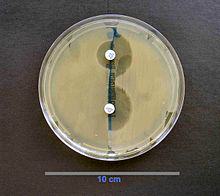This is a fairly technical and complex issue but we will do our best to make it accessible and comprehensible to the average person. It is best approached by breaking down the components of the issue into their respective parts.
Enterobacteriaceae Basics
To start with, the Enterobacteriaceae is the scientific name for a large family of related bacteria that include many that are harmless as well as some that most certainly can be dangerous including: Salmonella sp, Escherichia coli, Yersinia pestis, Klebsiella sp, Shigella sp, Proteus sp, Enterobacter sp, Serratia sp, and Citrobacter sp. The abbreviation “sp” refers to “species” and is used to indicate that multiple species under the given genus are indicated. This list is most certainly NOT exhaustive as the full family of Enterobacteriaceae comprises well of 50 individual genus groups, not even considering the many more hundreds of species designations that would be included.
The major organisms of concern to the general population are those listed above, although that should not be taken to mean that most people would be susceptible to serious infections with these organisms, or that the presence of some of these organisms, depending on body site isolated from, would even be abnormal. For example, average run-of-the-mill Escherichia coli is normal in the intestinal tract but not normal in the urinary tract, where it is a major cause of urinary tract infections. On the complete other end of the spectrum, Yersinia pestis is always bad news as it is the bacteria that causes plague, in several forms. It is never normal for these bacteria to be found, and while there are always several cases a year in the United States, it is a very uncommon infection that is usually easily treated if diagnosed early.
What Is Beta Lactamase and
Why Does It Matter?
Beta-lactamase describes a group of related enzymes which are produced by some bacteria that have the unfortunate effect of rendering some common antibiotics useless against those bacteria. This is accomplished through the destruction, through hydrolysis, of the beta-lactam ring, the molecularly functional component of these types of antibiotics known as beta-lactams. The beta-lactam group of antibiotics includes all types of penicillin (these drugs usually have names that end with –cillin, although brand names vary), as well as cephamycins, cephalosporins, and carbapenems. These drugs are very commonly used in both out-patient and in-patient situations and the development of widespread resistance to these drugs, especially against the carbapenems which are considered drugs of last resort, has caused somewhat of a crisis in infectious disease medicine as there are currently no new antibiotics in production or development that do not rely on existing models which have had resistance developed against them.




